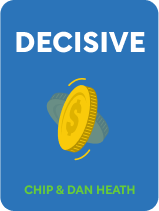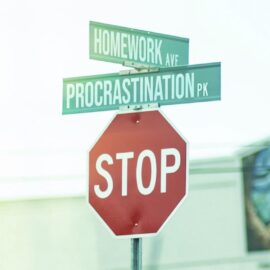

This article is an excerpt from the Shortform book guide to "Decisive" by Chip and Dan Heath. Shortform has the world's best summaries and analyses of books you should be reading.
Like this article? Sign up for a free trial here.
How do we make decisions? Have you ever made a decision that felt right at the time, but that caused you deep regret down the road?
When making decisions, we usually commit to one choice and hope for the best. These steps aren’t a problem in themselves. The problem is that we passively follow the chosen path, even if there are clear signs it’s leading us astray.
Here’s how to make the right decision you’ll never regret.
Create an Alert
In their book Decisive, Chip and Dan Heath give the following advice on how to make the right decision you’ll never regret: Watch out for the early signs that your decision is headed towards a negative outcome. Our hubris may tempt you to ignore these signs, so the authors recommend that you humbly assume your decision will have negative outcomes.
They advise us to proactively create an alert: a reminder for us to act that fires in response to early signs of a negative outcome. Alerts ensure that we recognize when it’s time to follow up our decision with another decision that steers us off the path toward a negative outcome.
(Shortform note: The authors’ discussion of alerts, and the way that alerts trigger a new decision, implies that decision-making has cyclical nature: The outcomes of a decision create the circumstances for the next decision.)
One type of alert that the authors offer is a deadline. After you make a decision, choose a date in the near future. When that date arrives, evaluate the success of your decision so far and determine whether you need to change course.
(Shortform note: A deadline alert is a chance to reflect upon your decision at a predetermined time. Annie Duke recommends that when we reflect upon a decision’s outcomes, we distinguish between outcomes caused by luck and outcomes caused by skill. That way, we notice and continue behaviors that contributed to success, notice and stop behaviors that led to failure, and acknowledge moments of luck or unluckiness that were out of our control.)
Another type of alert that the authors offer is a pattern. After you make a decision, list several possible warning signs that the decision is headed towards a negative outcome. If you notice a pattern of more than one warning sign, it’s a signal that you need to either re-evaluate your decision or follow it up with another one.
For example, imagine a teacher in a classroom that has several students who are new to the school. He wants to ensure that they’re integrating well with their peers, and he determines that sitting alone at lunch would be a sign of poor integration. Each day, he observes the students eating. If he ever notices that a student sits alone more than two times, this pattern alerts him to decide how to better support them.
(Shortform note: Because confirmation bias makes us see what we want to see, it’s possible that we may not notice warning signs that our decision is headed towards a negative outcome. When setting a pattern-style alert, consider enlisting the help of a friend, colleague, or family member who can help you notice warning signs and shake you out of your confirmation bias.)
Alerts Help to Counter Passive Living
As well as helping you to counteract hubris, alerts help you overcome another issue that the Heath brothers highlight: passive living. This is when you proceed through life without actively reflecting on your daily behavior. The authors argue that when we live passively, we often fail to recognize opportunities to follow up on our decisions. An alert helps us recognize these opportunities.
For example, consider someone who decides to buy a car. Not long after this decision, they slip into passive living and fail to notice the car’s gradual deterioration. It may not occur to them that they should decide to get a tune-up or purchase a new one in better condition.
(Shortform note: Why do we tend to live passively? Daniel Kahneman’s research in Thinking, Fast and Slow reveals that our brain sometimes employs heuristics: automatic shortcuts for processing information. This part of our brain allows us to make intuitive, efficient judgments, which can be useful in many situations (such as reading signs on bathroom doors to determine which one to enter). Kahneman argues that we make poor decisions when we act upon these instincts without questioning them: in other words, when we passively allow them to rule our lives.)

———End of Preview———
Like what you just read? Read the rest of the world's best book summary and analysis of Chip and Dan Heath's "Decisive" at Shortform.
Here's what you'll find in our full Decisive summary:
- Why our minds are wired to make bad decisions
- How biases and cognitive flaws distort your thinking
- A four-step process to improve your decision-making






